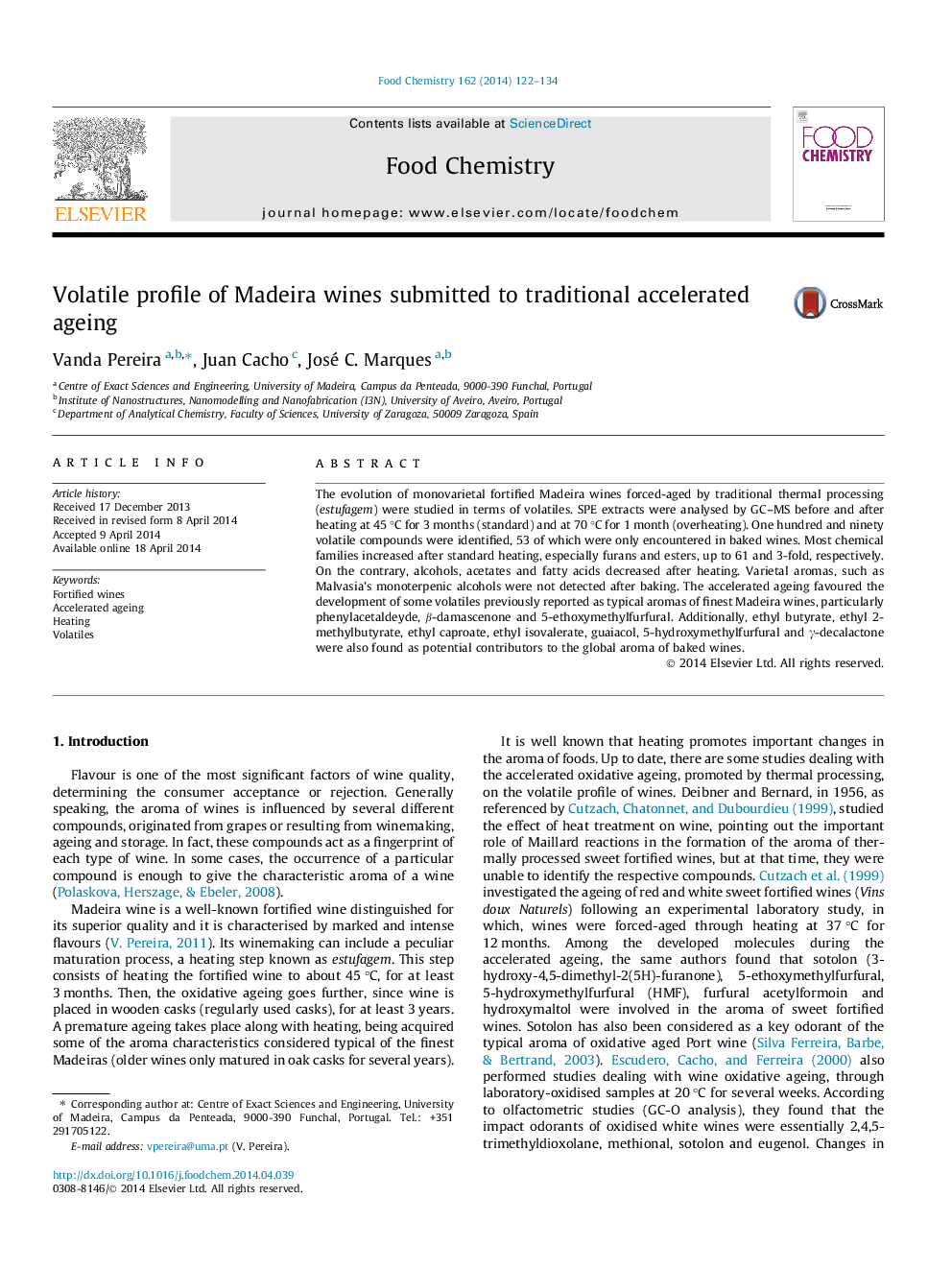| Article ID | Journal | Published Year | Pages | File Type |
|---|---|---|---|---|
| 1183861 | Food Chemistry | 2014 | 13 Pages |
•The volatile composition of forced-aged fortified Madeira wines was evaluated.•Estufagem promoted a significant increase in the volatile profile of Madeira wines.•From the 190 volatiles identified, 53 were only encountered in baked wines.•Estufagem favoured the development of tertiary aromas typical of the finest Madeiras.
The evolution of monovarietal fortified Madeira wines forced-aged by traditional thermal processing (estufagem) were studied in terms of volatiles. SPE extracts were analysed by GC–MS before and after heating at 45 °C for 3 months (standard) and at 70 °C for 1 month (overheating). One hundred and ninety volatile compounds were identified, 53 of which were only encountered in baked wines. Most chemical families increased after standard heating, especially furans and esters, up to 61 and 3-fold, respectively. On the contrary, alcohols, acetates and fatty acids decreased after heating. Varietal aromas, such as Malvasia’s monoterpenic alcohols were not detected after baking. The accelerated ageing favoured the development of some volatiles previously reported as typical aromas of finest Madeira wines, particularly phenylacetaldeyde, β-damascenone and 5-ethoxymethylfurfural. Additionally, ethyl butyrate, ethyl 2-methylbutyrate, ethyl caproate, ethyl isovalerate, guaiacol, 5-hydroxymethylfurfural and γ-decalactone were also found as potential contributors to the global aroma of baked wines.
